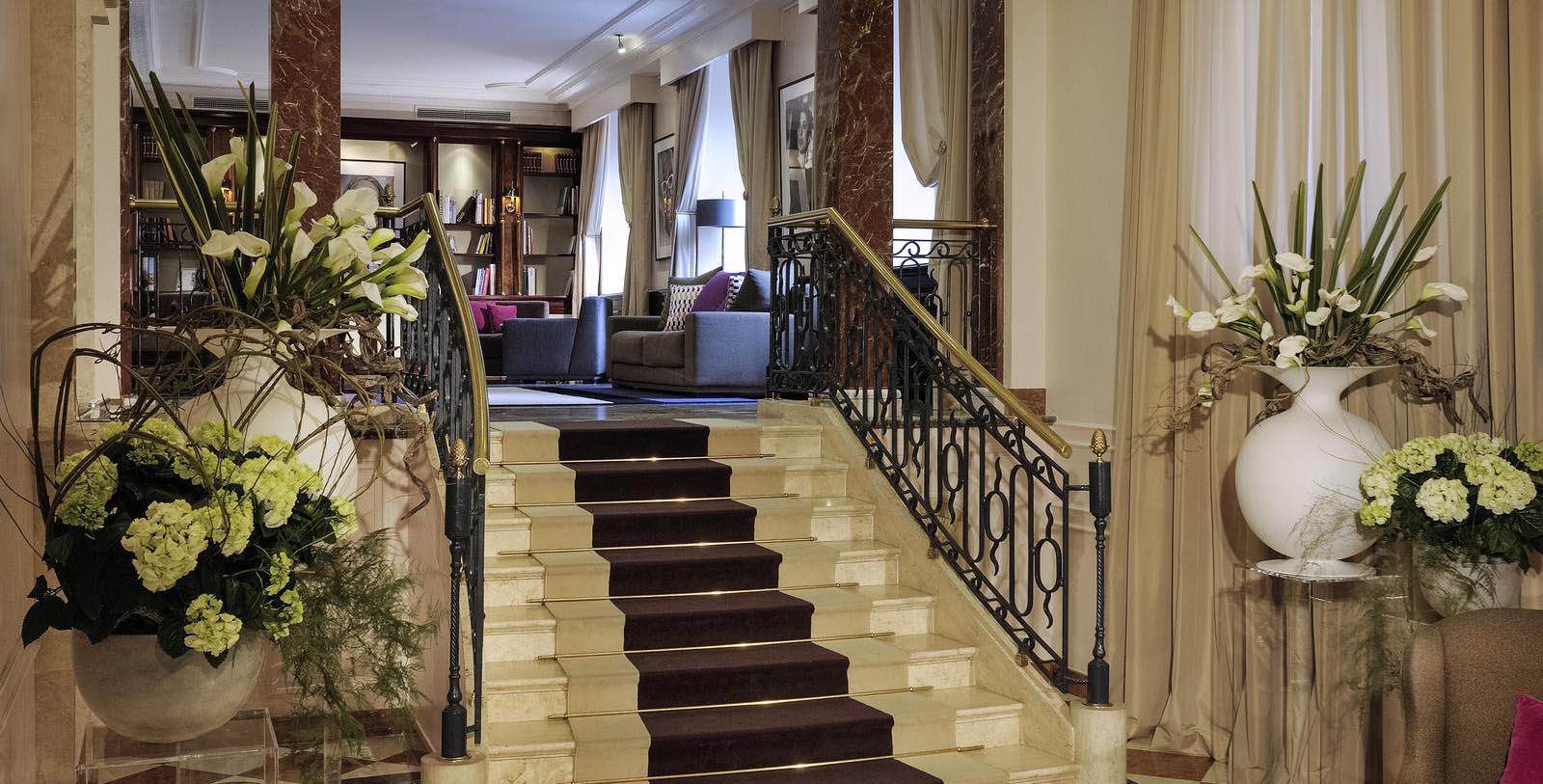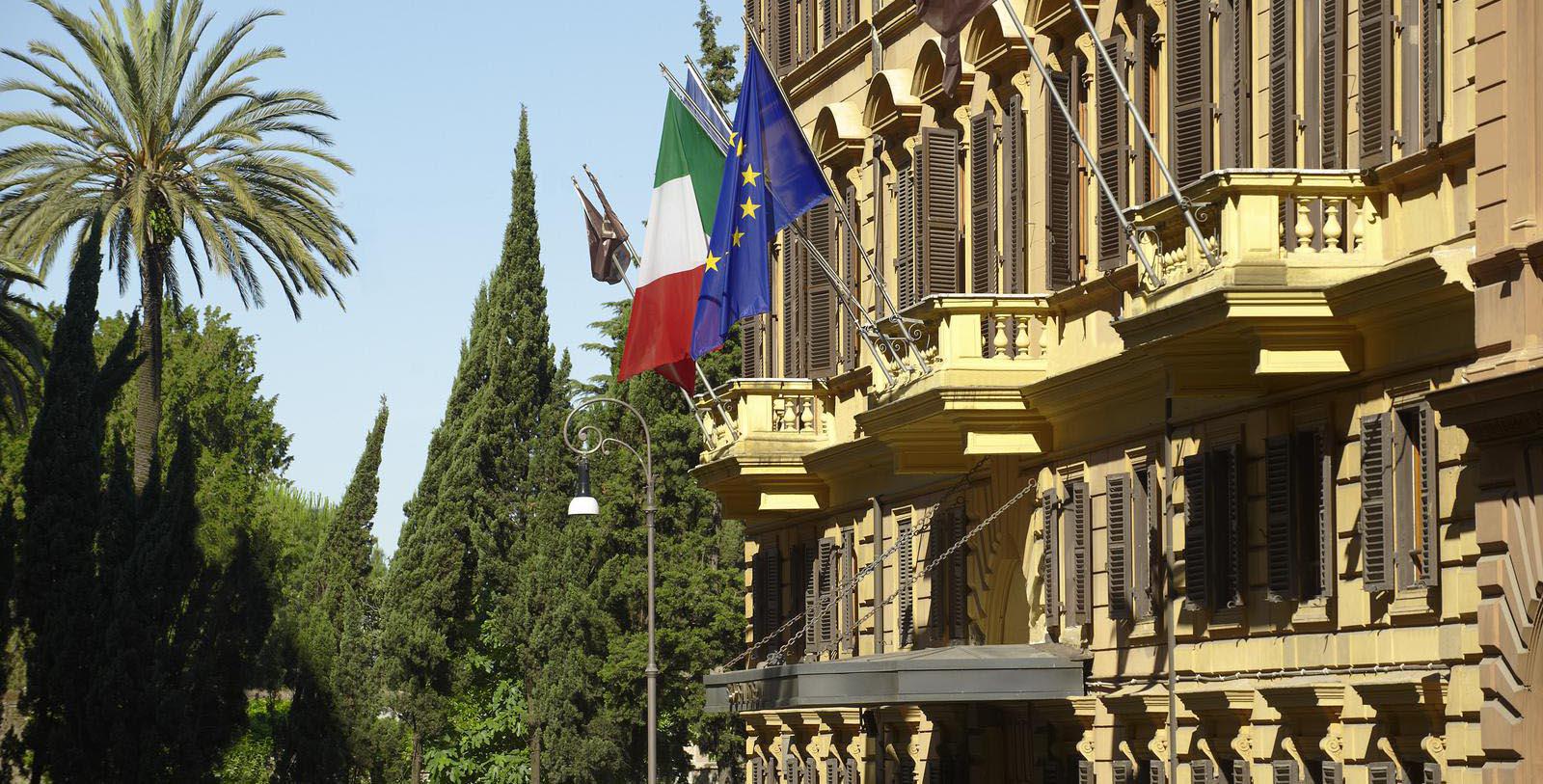Receive for Free - Discover & Explore eNewsletter monthly with advance notice of special offers, packages, and insider savings from 10% - 30% off Best Available Rates at selected hotels.
history
Discover the Sofitel Rome Villa Borghese, which was once the home of the powerful Boncompagni Ludovisi family.
Sofitel Rome Villa Borghese, a member of Historic Hotels Worldwide since 2018, dates back to 1890.
VIEW TIMELINEA member of Historic Hotels Worldwide since 2018, the luxurious Sofitel Rome Villa Borghese is one of Italy’s most spectacular retreats. The destination specifically takes its name from the neighboring Villa Borghese Pinciana, a beautiful Renaissance-Era palace where the prominent Borghese family once resided for centuries. During the early 19th century, a fellow aristocratic family, the Boncompagni Ludovisi, constructed their own palace near the Villa Borghese Pinciana. Among the structure that the family developed was a small guesthouse that buttressed the edge of the estate. The Boncompagni Ludovisi accommodated friends and family at the guesthouse for the next several decades, until it was transformed into a boutique hotel in 1890. Operating as the “Boston Hotel,” the former aristocratic residence entertained some of the most well-known movie stars, including Sean Connery, Elizabeth Taylor, and Richard Burton. Ava Gardner and Walter Chiari hid away from the paparazzi at the hotel as their high-profile romance blossomed after costarring together in The Little Hut during the late 1950s. Even the renowned director Frederico Fellini frequented the hotel after he completed his critically-acclaimed film, La Dolce Vita. By the mid-20th century, the hotel had become a popular vacationing spot for international celebrities. Today, Sofitel owns this fantastic building, running it as the Sofitel Rome Villa Borghese. Sofitel has worked to preserve the rich, cinematic heritage of the building, allowing for guests who visit to still feel the potent, glamorous presence of its illustrious clientele.
-
About the Location +
The Sofitel Rome Villa Borghese derives its name from the historic public park that resides just moments away. Known across The Eternal City simply as the “Villa Borghese,” the space is a magnificent series of manicured gardens that extend for some 198 acres. The park is so large that its currently the third largest of its kind in all of Rome! At the center of the park is a brilliant palace called the “Galleria Borghese.” Designed with some of the best Renaissance-inspired architectural motifs, the Galleria Borghese today is an amazing museum filled with many different kinds of classical art. Among the most significant pieces of artwork within its collection are ornate ceiling frescoes and classical sculptures dating back to the height of the Roman Empire. Other statutes located throughout the building include figures created by the accomplished Gian Lorenzo Bernini, such as Goat Amalthea with Infant Jupiter and Faun; Apollo & Daphne; and Aeneas, Anchises & Ascanius. But the history of the structure is also incredibly dense, having been constructed generations ago in the 17th century. Cardinal Scipione Borghese of the powerful Borghese dynasty desired to construct a brilliant manor atop the famed Pincian Hill. Had had specifically hoped its grand architectural appearance would impress all who viewed it of not only his own prestige, but that of his family, too.
Scipione Borghese subsequently commissioned the architect Flaminio Ponzio to spearhead its design in the early 1600s, although he would die before seeing it finished. In his absence, the Cardinal tasked Dutch engineer Jan van Santen to complete the design. Both Ponzio and van Santen created a brilliant structure, replete with all kinds of ornate interior and exterior details. Cardinal Borghese remained heavily involved throughout the design process, though, even handing his architects hand-drawn plans that he had made himself. But the Cardinal had also partnered with a renowned landscaper named Domenico Savino de Montepulciano to transform the surrounding grounds into a gorgeous series of lavish gardens. At first, Borghese had operated the site as his own private vineyard. The Cardinal nevertheless envisioned the terrain serving as a tranquil preservation where he could both hunt and relax. Montepulciano manifested his vision magnificently, installing a series of extravagant fountains, sculptures, and hedges around the palace. Furthermore, Montepulciano endeavored to raise a number of smaller houses throughout the estate that would help administer its many features, as well as to complement its beautiful appearance.
When work on both the palace and the gardens finally concluded in 1613, they stood together as one of the most stunning destinations in Rome. Cardinal Borghese immediately threw himself into the upkeep of his grand estate, investing heavily into its continued renovation. The Cardinal spared no expense, either, ensuring that only the best materials were used for his glorious residence. In fact, contemporary visitors at the time even spoke of the many exotic animals that Borghese had imported to live on-site, such as swans, peacocks, and ostriches. But Borghese was also an avid art collector, spending most of his life patronizing some of Italy’s best artists. As such, the Cardinal came to acquire many unique works of art from many renowned Renaissance painters and sculptures, including Titian, Raphael, and Caravaggio. To commemorate the brilliance of his palace—he specifically called it the “Casino Nobile”—Borghese adorned its hallways and guestrooms with their art. (He was also a huge supporter of Bernini, which is how the current museum acquired its collection of his sculptures.) Over time, Borghese’s personal grew to such an extent that is was one of the largest in the city!
The Villa Borghese remained in the family for years, even after the death of the Cardinal in 1633. It continued to serve as an important landmark for some time, although its local fame reached new heights when Prince Marcantonio IV inherited the estate a century later. He sponsored a massive renovation of his own, which saw the estate assume much of its current appearance. Working alongside architect Antonio Asprucci, Marcantonio Borghese completely rehabilitated the palace’s entire interior. He specifically oversaw the placement of grander décor, while also reconstructing its amazing historical features. But he installed new artwork throughout the building, commissioning artists like Mariano Rossi and Pietro Rotari to create spectacular trompe-l'œil ceiling frescoes in many of the rooms. Borghese’s tireless renovations affected the gardens, too, which he comprehensively redesigned to resemble an English-style layout. Many of the current garden’s historic, neoclassical structures debuted at Marcantonio Borghese’s behest, such as the Aqua Felix, the Fountain of the Sea-Horses, and the Temple of Aesculapius (a recreation of a much earlier shrine from Roman antiquity.) Today, the Villa Borghese is a spectacular public park that is open to the public. Guests are sure to adore the outstanding attractions placed by the Borghese’s throughout the grounds, as well as the many gorgeous buildings that serve as fascinating cultural institutions.
-
About the Architecture +
The spectacular Sofitel Rome Villa Borghese displays an amazing blend of Classical Revival-style architecture. Also known as “Neoclassical,” Classic Revival design aesthetics are among the most common architectural forms seen throughout Europe. This wonderful architectural style first became popular in Europe in Paris, specifically among architectural students who studied at the French Academy in Rome in the late 18th century. Upon their return from the Italian Peninsula, the French architects began emulating aspects of earlier Baroque design aesthetics into their designs, before finally settling on Greco-Roman examples in the early 1800s. Over time, the embrace of Greco-Roman architectural themes spread across the continent, reaching destinations like Germany, Spain, and Great Britain. It found a particularly receptive audience among Italian architects, who relied upon the style to infuse a sense of heritage into their rapidly modernizing landscapes. As with the equally popular Revivalist styles of the same period, Classical Revival architect found an audience for its more formal nature. It specifically relied on stylistic design elements that incorporated such structural components like the symmetrical placement of doors and windows, as well as a front porch crowned with a classical pediment.
Architects would also install a rounded front portico that possessed a balustraded flat roof. Pilasters and other sculptured ornamentations proliferated throughout the façade of the building, as well. Perhaps the most striking feature of buildings designed with Classical Revival-style architecture were massive columns that displayed some combination of Corinthian, Doric, or Ionic capitals. With its Greco-Roman temple-like form, Classical Revival-style architecture was considered most appropriate for municipal buildings like courthouses, libraries, and schools. But the form found its way into more commercial uses over time, such as banks, department stores, and of course, hotels. Yet, the form found its way into more commercial uses over time, such as banks, department stores, and of course, hotels. Examples of the form can be found throughout many of the West’s major cities, including London, Paris, and New York City. Architects still rely on Classic Revival architecture when designing new buildings or renovating historic ones, making it among the most ubiquitous architectural styles in the world.
-
Famous Historic Guests +
Federico Fellini, famous film director known for such movies as La Dolce Vita and La Strada.
Sean Connery, known as the first James Bond, as well as his roles in such films like Murder on the Orient Express and The Hunt for Red October.
Richard Burton, famous actor known for his roles in Cleopatra and Where Eagles Dare.
Elizabeth Taylor, celebrated actress known for her roles in Cleopatra and The Taming of the Shrew.
Ava Gardner, renowned actress known for her roles in Mogambo, The Killers, and The Barefoot Contessa.
Walter Chiari, famed actor known for his roles in Bellissima and The Little Hut.


























